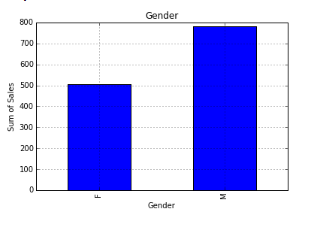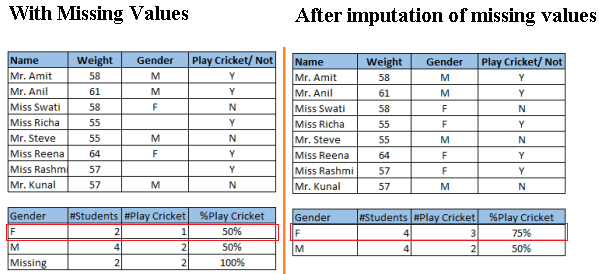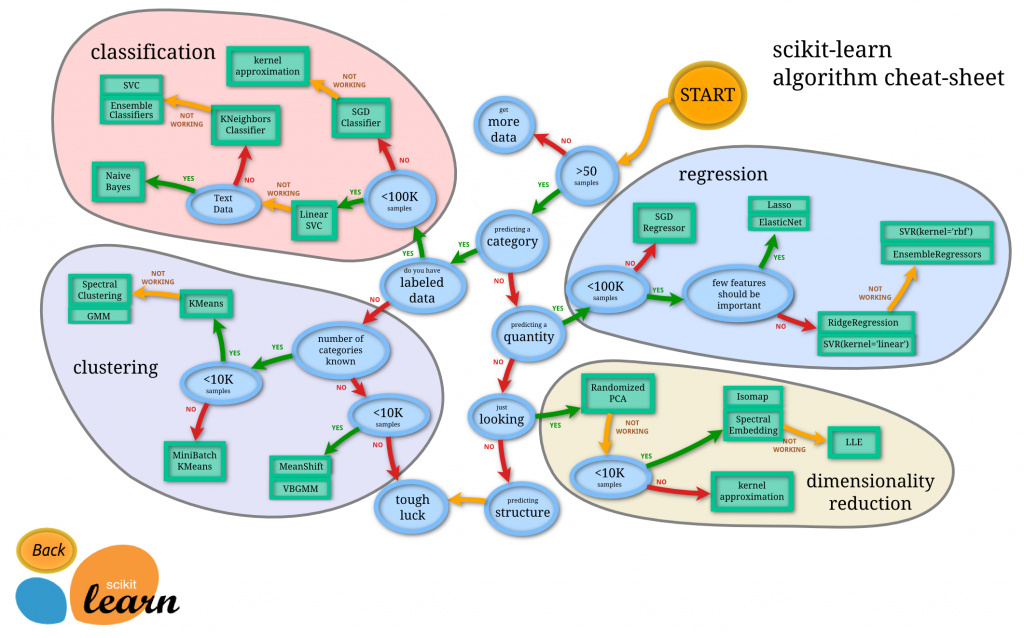8 Methods to Boost the Accuracy of a Model
The model development cycle goes through various stages, starting from data collection to model building.
But, before exploring the data to understand relationships (in variables), It’s always recommended to perform hypothesis generation. (To know more about hypothesis generation, refer to this link). I believe this is the most under – rated step of predictive modeling.
It is important that you spend time thinking on the given problem and gaining the domain knowledge. So, how does it help?
This practice usually helps in building better features later on, which are not biased by the data available in the data-set. This is a crucial step which usually improves a model’s accuracy.
At this stage, you are expected to apply structured thinking to the problem i.e. a thinking process which takes into consideration all the possible aspects of a particular problem.
Let’s dig deeper now. Now we’ll check out the proven way to improve the accuracy of a model:
1. Add more data
Having more data is always a good idea. It allows the “data to tell for itself,” instead of relying on assumptions and weak correlations. Presence of more data results in better and accurate models.
I understand, we don’t get an option to add more data. For example: we do not get a choice to increase the size of training data in data science competitions. But while working on a company project, I suggest you to ask for more data, if possible. This will reduce your pain of working on limited data sets.
2. Treat missing and Outlier values
The unwanted presence of missing and outlier values in the training data often reduces the accuracy of a model or leads to a biased model. It leads to inaccurate predictions. This is because we don’t analyse the behavior and relationship with other variables correctly. So, it is important to treat missing and outlier values well.
Look at the below snapshot carefully. It shows that, in presence of missing values, the chances of playing cricket by females is similar as males. But, if you look at the second table (after treatment of missing values based on salutation of name, “Miss” ), we can see that females have higher chances of playing cricket compared to males.
Above, we saw the adverse effect of missing values on the accuracy of a model. Gladly, we have various methods to deal with missing and outlier values:
- Missing: In case of continuous variables, you can impute the missing values with mean, median, mode. For categorical variables, you can treat variables as a separate class. You can also build a model to predict the missing values. KNN imputation offers a great option to deal with missing values. To know more about these methods refer article “Methods to deal and treat missing values“.
- Outlier: You can delete the observations, perform transformation, binning, Imputation (Same as missing values) or you can also treat outlier values separately. You can refer article “How to detect Outliers in your dataset and treat them?” to know more about these methods.
3. Feature Engineering
This step helps to extract more information from existing data. New information is extracted in terms of new features. These features may have a higher ability to explain the variance in the training data. Thus, giving improved model accuracy.
Feature engineering is highly influenced by hypotheses generation. Good hypothesis result in good features. That’s why, I always suggest to invest quality time in hypothesis generation. Feature engineering process can be divided into two steps:
- Feature transformation: There are various scenarios where feature transformation is required:
A) Changing the scale of a variable from original scale to scale between zero and one. This is known as data normalization. For example: If a data set has 1st variable in meter, 2nd in centi-meter and 3rd in kilo-meter, in such case, before applying any algorithm, we must normalize these variable in same scale.
B) Some algorithms works well with normally distributed data. Therefore, we must remove skewness of variable(s). There are methods like log, square root or inverse of the values to remove skewness.
 C) Some times, creating bins of numeric data works well, since it handles the outlier values also. Numeric data can be made discrete by grouping values into bins. This is known as data discretization.
C) Some times, creating bins of numeric data works well, since it handles the outlier values also. Numeric data can be made discrete by grouping values into bins. This is known as data discretization.
- Feature Creation: Deriving new variable(s ) from existing variables is known as feature creation. It helps to unleash the hidden relationship of a data set. Let’s say, we want to predict the number of transactions in a store based on transaction dates. Here transaction dates may not have direct correlation with number of transaction, but if we look at the day of a week, it may have a higher correlation. In this case, the information about day of a week is hidden. We need to extract it to make the model better.
A) Changing the scale of a variable from original scale to scale between zero and one. This is known as data normalization. For example: If a data set has 1st variable in meter, 2nd in centi-meter and 3rd in kilo-meter, in such case, before applying any algorithm, we must normalize these variable in same scale.
B) Some algorithms works well with normally distributed data. Therefore, we must remove skewness of variable(s). There are methods like log, square root or inverse of the values to remove skewness.
 C) Some times, creating bins of numeric data works well, since it handles the outlier values also. Numeric data can be made discrete by grouping values into bins. This is known as data discretization.
C) Some times, creating bins of numeric data works well, since it handles the outlier values also. Numeric data can be made discrete by grouping values into bins. This is known as data discretization.4. Feature Selection
Feature Selection is a process of finding out the best subset of attributes which better explains the relationship of independent variables with target variable.
 You can select the useful features based on various metrics like:
You can select the useful features based on various metrics like:
- Domain Knowledge: Based on domain experience, we select feature(s) which may have higher impact on target variable.
- Visualization: As the name suggests, it helps to visualize the relationship between variables, which makes your variable selection process easier.

- Statistical Parameters: We also consider the p-values, information values and other statistical metrics to select right features.
- PCA: It helps to represent training data into lower dimensional spaces, but still characterize the inherent relationships in the data. It is a type of dimensionality reduction technique. There are various methods to reduce the dimensions (features) of training data like factor analysis, low variance, higher correlation, backward/ forward feature selection and others.


- PCA: It helps to represent training data into lower dimensional spaces, but still characterize the inherent relationships in the data. It is a type of dimensionality reduction technique. There are various methods to reduce the dimensions (features) of training data like factor analysis, low variance, higher correlation, backward/ forward feature selection and others.

 Source: Scikit-Learn cheat sheet
Source: Scikit-Learn cheat sheet

Comments
Post a Comment